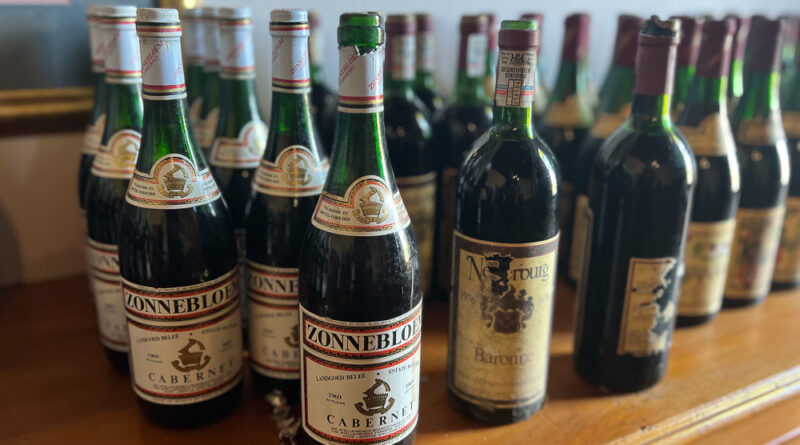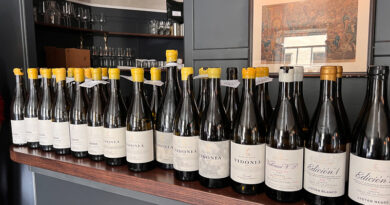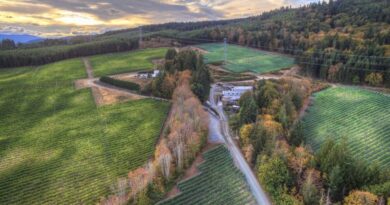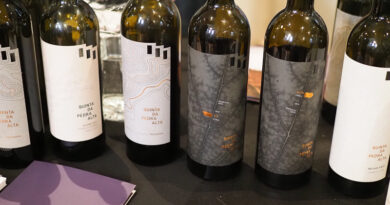Old South African wine: raiding the Winshaw cellar back to the 1950s
Bill Winshaw had a collection of South African wine from his time running the Stellenbosch Farmer’s Winery. His grandsons, JP and Pierre, are making wine again from the Winshaw vineyards, and are part of the Whole Bunch alliance of producers. At the Cape Wine event in October 2022 the Whole Bunch put on a tasting of these old wines from the 1950s, 60s and 70s. Jamie Goode reports.
Brothers Pierre and JP Winshaw have a wonderful stock of old wines in their family collection, and these formed the basis of this amazing tasting of older South African reds, in a similar format to the tasting they did here in 2018.

Their great grandfather Dr Charles William Winshaw lived a remarkable life, and he formed the Stellenbosch Farmers Winery (SFW) in 1925. This was a farmer’s collective that owned several brands, and made and marketed the wines of their member growers. Winshaw and his son William accumulated more wines than they drank, and as a result they built up a wonderful collection of wines on the farm. ‘We are tasting the wines that were born from this winery,’ says Pierre Winshaw.
Dr Charles William Winshaw: the story explained by Pierre Winshaw:
My great grandfather, Charles William Winshaw, was born in Kentucky. Aged 12 he ran away from home: he didn’t get on with his mother. He started working on farms wherever he could get a job. From there it was prospecting for gold, gambling in casinos. He made his first fortune from gold but then lost it quickly in the casinos. He also studied to become a doctor in one of the well known universities and went over to Germany where he specialised in tropical diseases. He came back and helped sort out an outbreak of yellow fever, and then having opened his practice he met a general who the Queen had sent to America to source mules for the Anglo-Boer war. He helped the general source 4000 horses, which he offered to bring over as the vet. So he came to South Africa via the Queen’s horses. When he got to South Africa he helped as a doctor in the war but became very unpopular because with the outbreak of some bad diseases he forced them to burn down a few important buildings. So he decided to leave the army and rented a farm outside Stellenbosch. This was in 1904. He started making wine. His wife was very upset with him because he took over the oven as he was cooking the wine, but apparently it was a hit and it sold out quickly. He started to buying in raisins to make the next batch of wine. This was the start of his adventures in the wine industry. From there he played more of a role as a wine merchant where he began buying in wine from the farmers and selling it. He was big personality; an adventurous spirit. This was the third continent he’d visited. He got involved with fruit juice, and this was also part of the business. The farmers were struggling because they weren’t getting paid enough for their grapes or wine, which meant the bank was in trouble because the farmers weren’t paying their loans. So my great grandfather approached the bank with a plan to sort the problem out. They needed to lend him money so he could go to the market and help increase the price. They weren’t keen, but they didn’t have an option. He went out and doubled the price of the grapes and wine, upsetting many of the other merchants. But through that process the farmers were earning a bit more and they were selling everything to him. He was paying the most, and the other merchants ended up paying more. In the end he used up only about half the loan the bank gave him. This was the person he was: he wasn’t just looking after himself.
‘We always speak about Dr Charles William Winshaw,’ he adds, ‘but grandfather William joined in late 1920s and he focused the business. His father had big ideas, but William focused on the wine. He had a good understanding of what the market needed. His lifetime’s work was to teach South Africa to appreciate wine. He did a great job getting the beer-drinking nation to start drinking wine as well.’
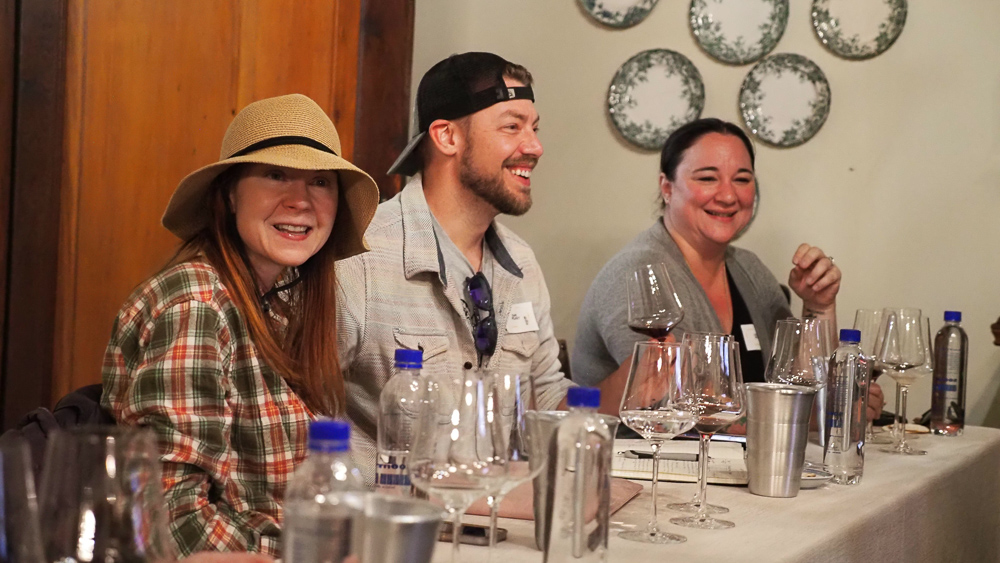
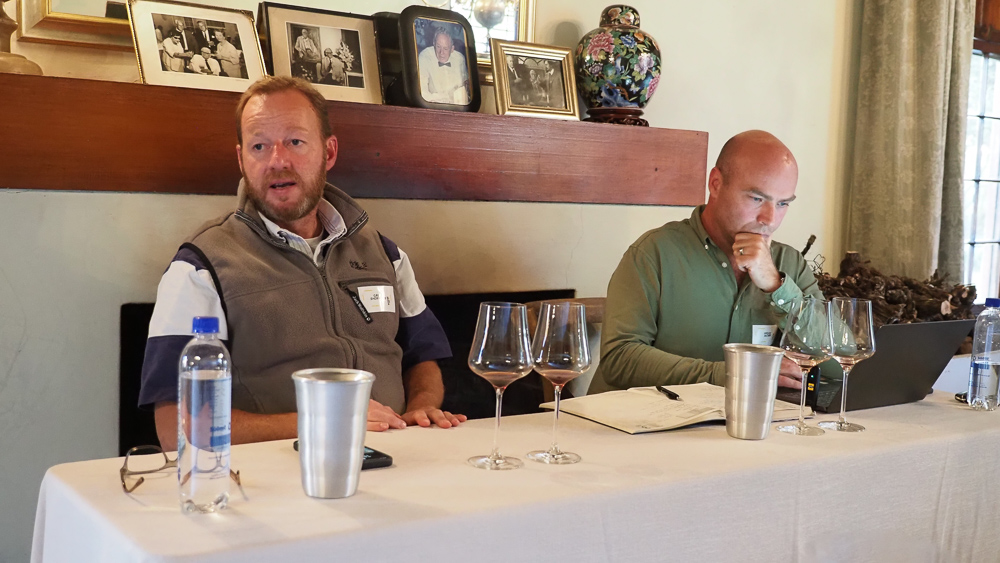
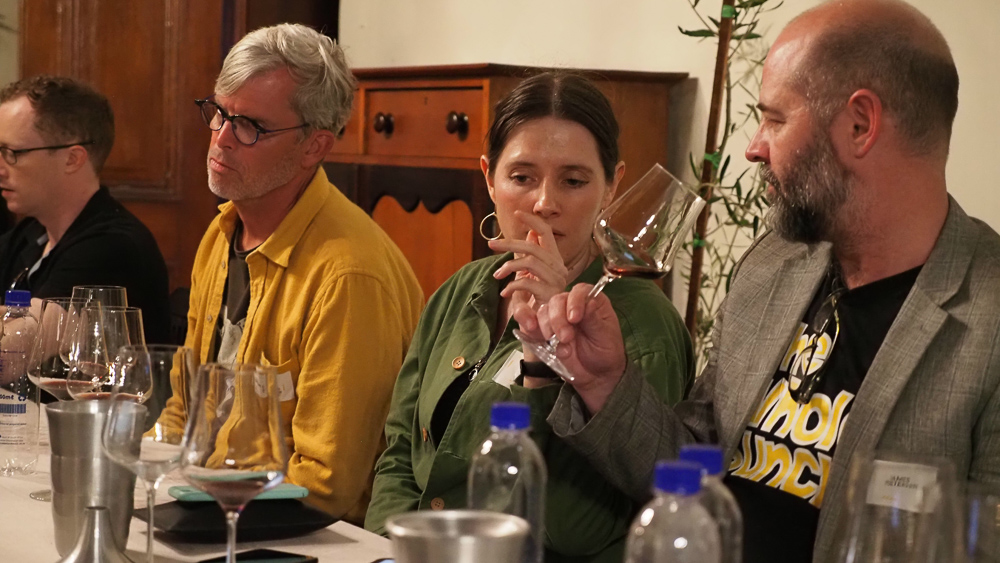
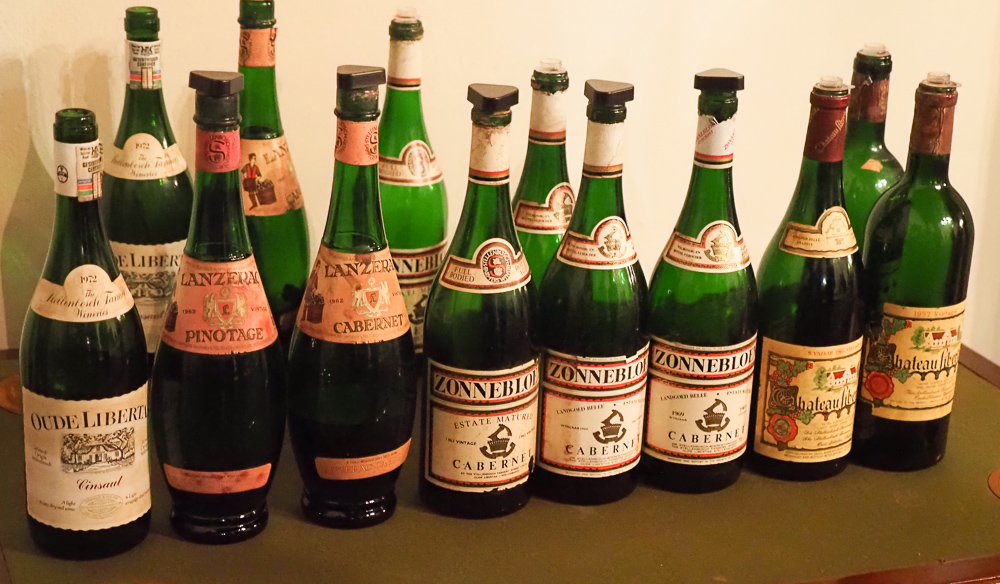

The wines of the period we were tasting came from a different era, when there were fewer brands, and when the wines were made quite differently. ‘In the 1940s to 50s there were as few as ten bottled wines on the market,’ says Pierre. The wines of the 1950s, 60s qnd 70s aged really well, but those of the 1980s and 1990s less so. The older wines would have had tartaric acid routinely added, and sulfites would have been added to the grapes, but not to the wines. The presses were of the old archimedes screw type, and multivintage blends with as much as 40% of different vintages to that on the label would have been common. Malolactic fermentation wasn’t understood then, and some of these reds would have had no malolactic.
THE WINES
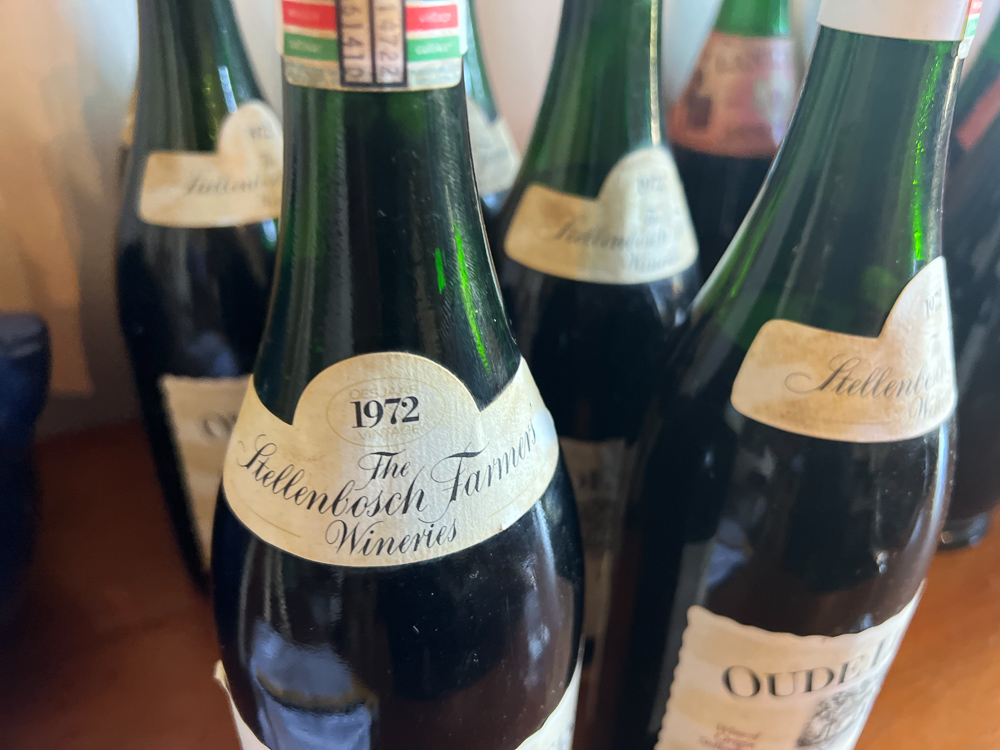
Oud Libertas Cinsault 1972 Stellenbosch
Released just in the 1970s, as single variety wines from Stellenbosch. Wines that were made to experiment. The WO system came in only in 1974. Brown colour. Aromatic nose of earth and spice, with some malty hints. The palate is fresher with some sweet strawberry and cherry fruit with lovely elegance and finesse: there’s a lovely mouthfeel here. It’s textured and expressive with some hints of tea and turned earth, but also fine red fruits on the finish. There’s a real elegance here. The nose is much older than the palate. 94/100
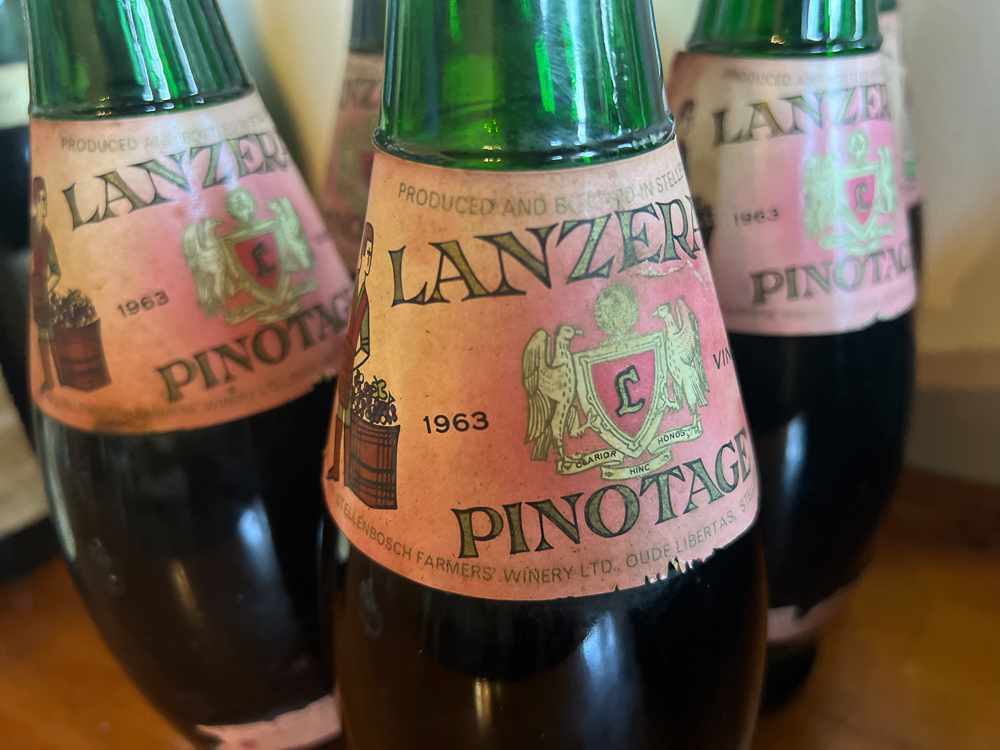
Lanzerac Pinotage 1963
Just four years after the first commercial Pinotage which was 1959. Some savoury earth and spice on the nose, with cherry and plum fruit. Quite developed. The palate is dense and savoury with some earth, spice and a bit of cherry and plum fruit. Brooding and dark, with lots of development, and some earthy, spicy detail. Grip on the finish. 91/100
Lanzerac Cabernet Sauvignon 1962
Malty, spicy and aromatic on the nose with real concentration and berry fruit richness. There’s a nice acid line here with sweet fruit. Expressive and perfumed with real intensity and some grainy hints. Such lovely concentration of fruit purity here: still quite robust. Fresh, fine spicy finish here. 94/100
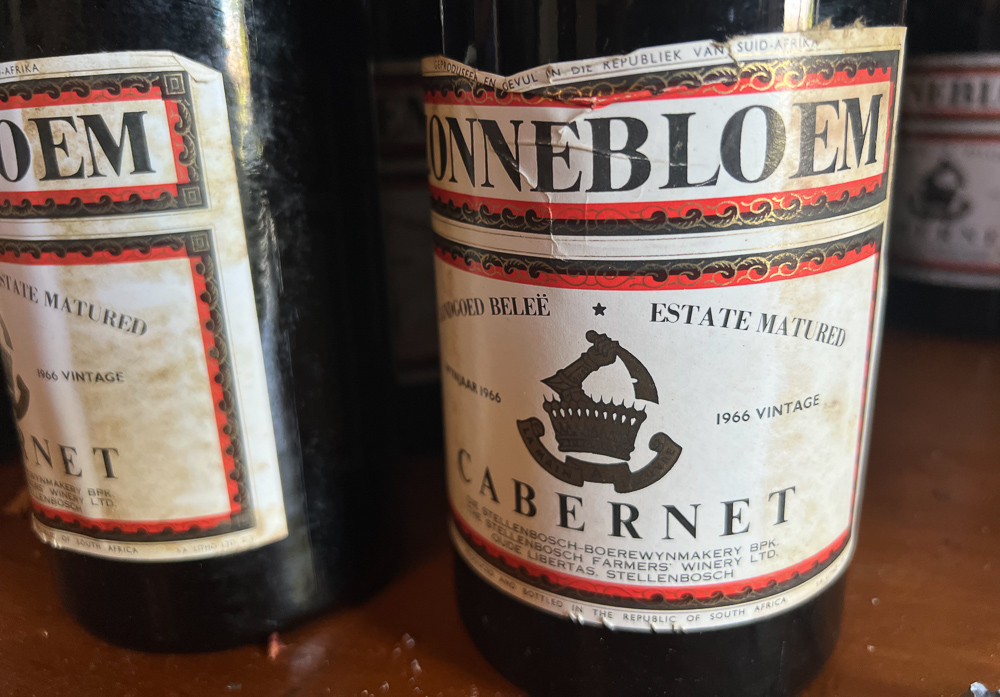
Zonnebloem Cabernet 1962
This is a property in Paal, but from the 1960s onwards they had some Stellenbosch fruit. This is mature but there’s a lovely core of blackcurrant fruit with texture and fine sweet blackberry and cherry fruit. There’s a bit of spice and earth with a touch of savouriness. Lovely detail: compact, still with lovely fruit. So delicious: compact and structured with lovely fruit. 93/100
Zonnebloem Cabernet 1966
Beautiful aromatics with perfumed cherry and plum fruit with subtle earth and spice notes. The palate has some earthy development but also a core of very sweet cherry and plum fruit, with a hint of blackcurrant. Great focus and elegance here, with a soft texture, but still enough tannic structure to add a nice framing. Finishes nicely brisk. Such a lovely wine. 96/100
Zonnebloem Cabernet 1969
Mellow and smooth with soft malt and earth, as well as a hint of toffee. Sleek, ripe and expressive with lovely weight. Has an ease to it: it’s fully mature now and smooth and sweet, with a hint of earthiness on the finish. There’s a bit of brightness on the finish. 92/100
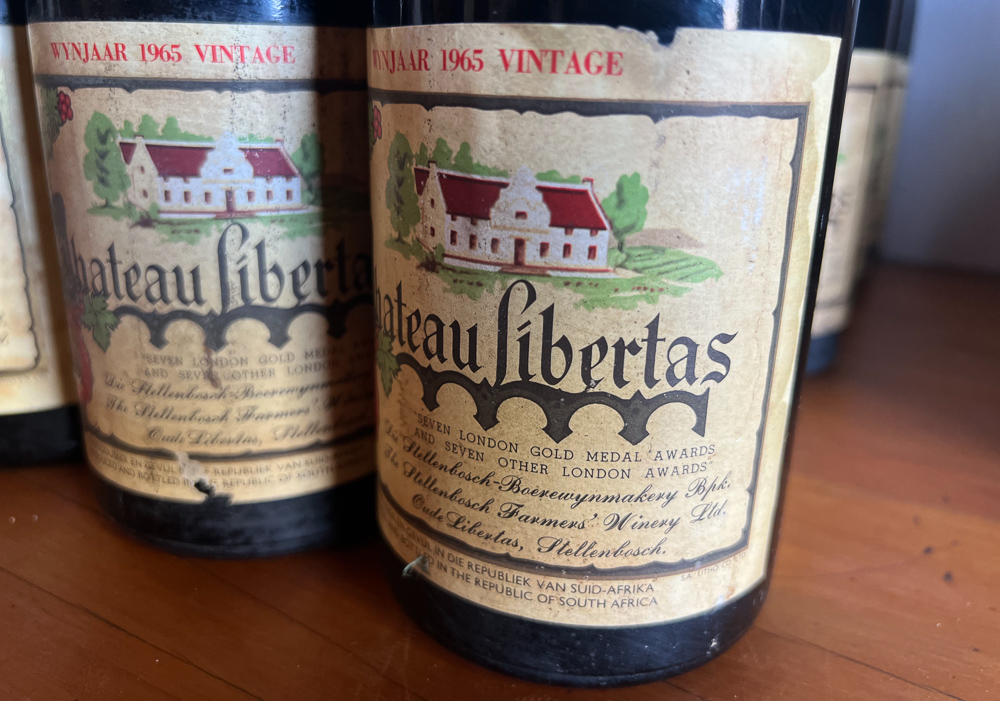
Chateau Libertas 1965
Vivid, fresh, slightly earthy nose with raspberry and blackcurrant fruit. The palate has lovely focus and sweetness to the fruit, with cherries and some orange peel and citrus. There’s freshness, some savouriness, and wonderful cherry and raspberry notes. This has real depth and refinement. Such precision and detail. This is very fine. 96/100
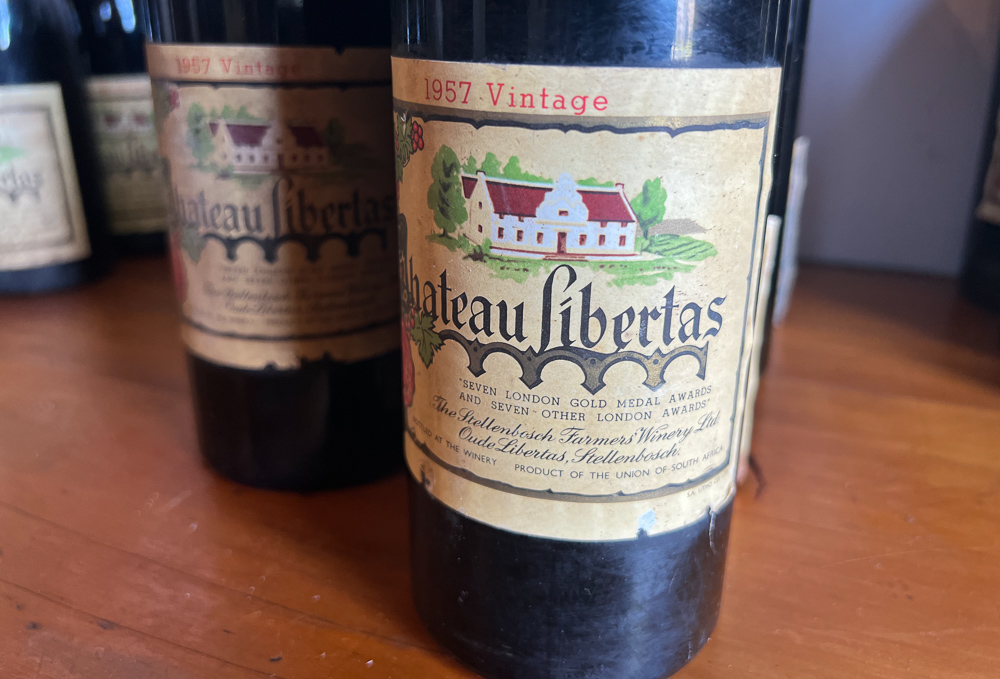
Chateau Libertas 1957
Gravel, cherry, chalk, blackcurrant and dried herbs on the nose. Some development but also lovely freshness. This has a beautiful palate with fresh, taut blackcurrant fruit and some cherry and plum notes. Such elegance and freshness, with amazing depth and focus. So elegant and refined with plenty of fruit, but also good structure. Dry on the finish, but no hurry to drink this up. Remarkable. 98/100
A short film of the tasting:

